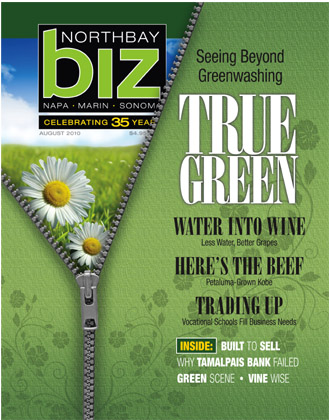|
|
(c) Copyright Patricia Dines, 2010. All rights reserved. |
Her conclusion is that, "you have to step up and say, 'I have a company that's going to change the way we relate to the environment, and here's how we're going to do it.' And you have to be honest about it, create the benchmarks and be authentic about where you are in the journey. That's leadership."
Companies that make this bold choice are doing more than making money, creating business opportunities, serving customers, and contributing to a better future. They're also helping shape our evolving collaborative understanding of what green really means.
RESOURCES
